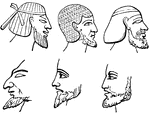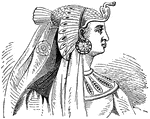
Egyptians Plowing
From a Bas-Relief of the Oldest Dynasty, Memphis. Depicts two men plowing with two oxen.
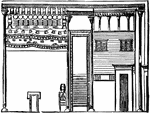
Egyptian Dwelling
"The houses of the artisans and husbandmen were generally of brick, and were as well furnished as the…
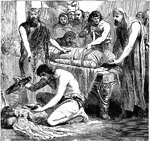
Process of Embalming
"When an Egyptian died the friends of the deceased went at once to the embalmer, By him they were shown…
Column of Osiris
A column depicting the Egyptian god Osiris. Osiris is usually affiliated with the Afterlife, the underworld…
Column from the Temple of Denderah, with Hathor Masks, Time of Cesar
Column located in the Temple of Denderah, with masks of Hathor, an Egyptian sky goddess of love and…
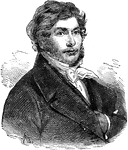
Champollion
Portrait of Jean-Francois Champollion, a French scholar and decipherer of Egyptian hieroglyphs.
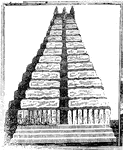
Ancient Pyramid
"The pyramids of Egypt are well entitled to a place among the most interesting curiosities in the world.…
Early Egyptian Pictures
"Early Egyptian Pictures. Ploughing, breaking clods, and sowing."—Gordy, 1912

A Prehistoric Egyptian Tomb
"The skeleton lay on the left side with knees drawn up and hands raised to the head. About it were various…
Examples of Picture Writing
"1, 'war' (Dakota Indian); 2, 'morning' (Ojibwa Indian); 3, 'nothing' (Ojibwa Indian); 4 and 5, 'to…
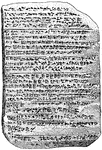
The Amarna Tablet
A series of correspondence on clay tablets between the Egyptian administration and its representatives…

Ramses II Seated
"A black granite statue of the youthful Ramses II. It is probably a faithful portrait. No better work…
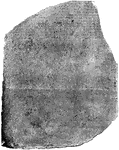
The Rosetta Stone, Front View
A fragment of an Ancient Egyptian text, which provided the key to the modern understanding of Egyptian…
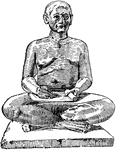
An Egyptian Scribe
A statue of a man who recorded books and/or documents during the era of Ancient Egypt.

The Sheikh-El-Beled
"Supposed portrait of one of the overseers of the work on the Great Pyramid. This is one of the masterpieces…

Plowing
An hieroglyph-style drawing of a plow and plowman. A plow was a device used to make furrows in the earth…

Egyptian Brick-Making
An image of the Egyptian brick-making process. Bricks were usually made by foreigners. Exodus 5 records…

The Lentil Plant
This illustration shows a lentil plant. Lentils are the round, flat seeds of a small leguminous plant…

Egyptian Agriculture
An example of Egyptian agriculture. 1, the reapers; 2, reaper drinking from cup; 3, 4, Gleaners - the…
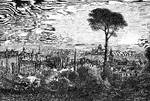
The Piazza del Popolo in Rome
View of the Piazza del Popolo looking west from the Pincian Hill. On the left are the twin churches…





